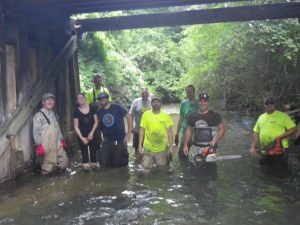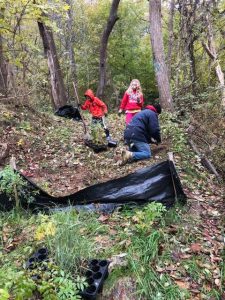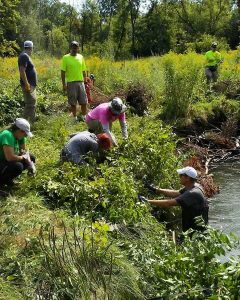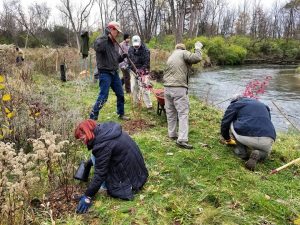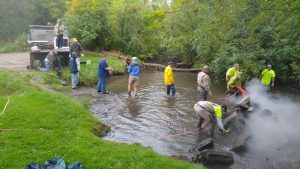The Clinton River Coldwater Conservation Project seeks to generate public support for the Clinton River watershed as a valued recreational resource through efforts to improve the water quality, aesthetics, and access to the Clinton River and its tributaries.
- Forty percent (40%) of Michigan’s population lives in the three-county metropolitan Detroit area (Macomb, Oakland, and Wayne counties)
- Less than 1/2 of 1 percent of Michigan’s designated trout streams are located in these same counties
- None of the premier trout streams are located in this heavily populated area
Three major watersheds dominate this area:
- The Clinton River which flows into Lake St. Clair
- The Rouge River which flows into the Detroit River
- The Huron River which flows into Lake Erie
The Clinton has the most coldwater potential of the three streams. The Clinton watershed includes three DNR designated trout streams and several more tributaries that are known to harbor trout year-round. There is an established steelhead run in the lower mainstream of the Clinton. The Clinton Valley Chapter TU has invested more than fifteen years toward habitat restoration and improvement projects on Paint Creek, the Clinton’s premier designated trout stream tributary.
The Clinton River Coldwater Conservation Project has been selected by TU National as a stream improvement project for organizational development and capacity building under the Mott Grant for the Great Lakes region. A project steering committee is in place, which consists of representatives from Trout Unlimited (Challenge, Clinton Valley, Paul H. Young, and Vanguard Chapters), Clinton River Watershed Council, City of Auburn Hills, and the Michigan Department of Natural Resources.
Project Description: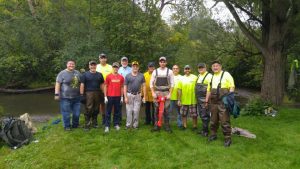
The goal for the first phase of the project was to assess and develop the cold-water potential and public access opportunities in lower Galloway Creek and the middle mainstream section of the Clinton River to become a designated trout stream. The skills and partnerships developed in this specific section of the Clinton River watershed will then be used for additional cold-water opportunities throughout the watershed. The majority of the inventory work was completed during the summer of 2003.
The goal for the second phase of this project was to enhance and/or create trout in-stream and streamside habitat that protects and creates trout spawning habitat. The second phase of the project began in 2005 and continues in 2006.
CRCCP continues to be an active program through the Clinton River Watershed Council that our chapter partners with for annual local conservation projects.
